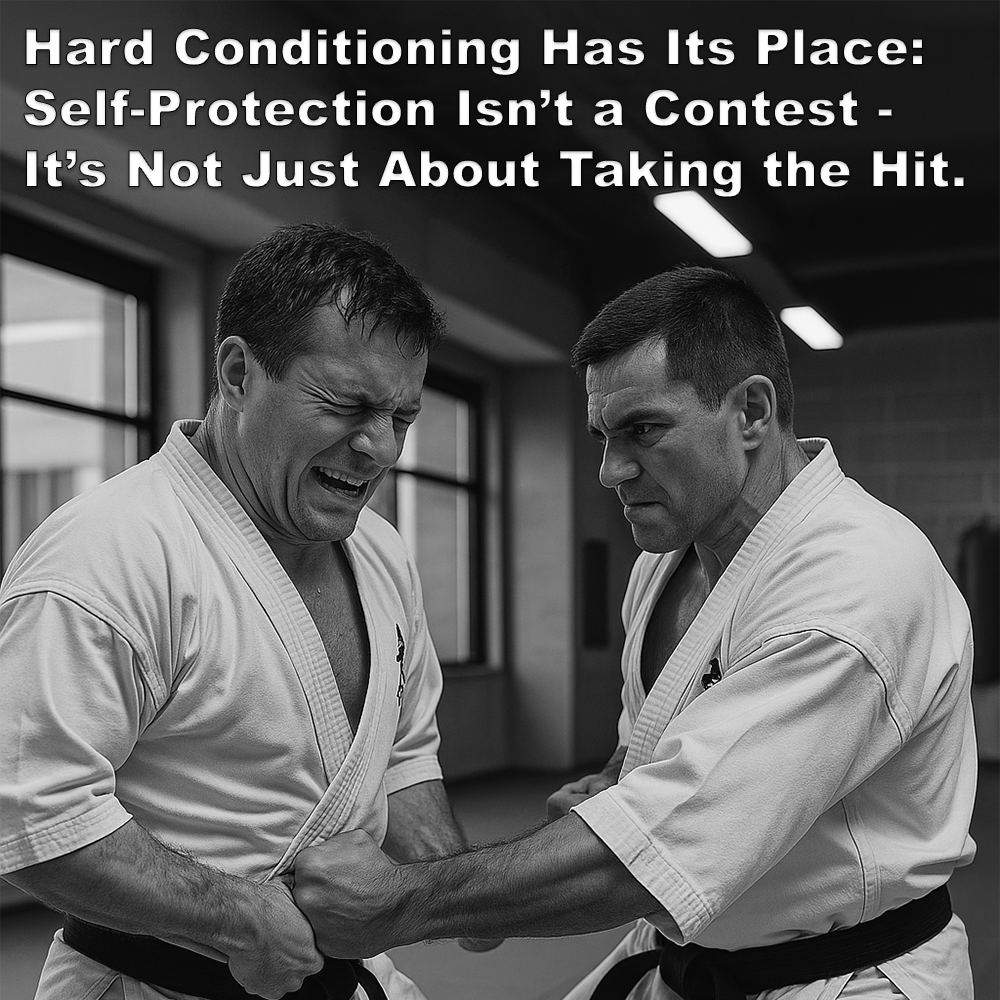
(Approx 2 minute 20 second read)
The funny thing about writing on the martial arts is that sometimes people read what you said, nod in agreement – then repeat it back to you, only louder, rougher, and with more bravado.
.
I recently wrote that the martial arts aren’t about looking for a fight – they’re about being prepared for one. I spoke about the danger of stripping away that purpose, leaving behind something that looks like the martial arts but has lost its original intent.
.
One reply restated the same message, but dressed it up in talk of brutality, as if being able to inflict injury is the full measure of training seriously.
.
That’s where we part ways.
.
Yes – karate was designed for self-protection. Yes – it can be brutal when it needs to be. But if you think it’s all about hurting people, you’ve missed the point entirely. It’s not just knowing how to break someone – it’s knowing when not to.
.
It’s about self-awareness, control, good judgment – and yes, self-discipline and courage that don’t rely on a fight to exist.
.
Rehashing something louder doesn’t make it deeper.
.
And that’s exactly what makes the dojo valuable – it can be the place where someone finds their feet, learns to hold their ground, and becomes something they didn’t think they could be.
.
He went on to say that in his style, they learn to stand there and take the hits – they don’t walk away. Well, we all go through learning what it feels like to get hit. You have to prepare for that too. In Okinawan karate it’s called kitae (鍛え), which refers to body conditioning and hardening exercises, often used as supplementary training to improve strength, resilience, and pain tolerance.
.
Still, it’s important to recognize that what he described – the grind, the hits, the personal transformation – is a method, not the goal.
.
The confidence and strength gained through that process are byproducts. But self-protection isn’t about enduring adversity – it’s about avoiding it, if possible.
.
That’s the distinction I’m making. I’m not against hard training – it’s a process we all have to go through – but I am against confusing that journey with the practical application of self-protection. They overlap, but they’re not the same map.
.
There’s a difference between combat sports and self-protection. They serve very different ends.
.
Real self-protection isn’t about enduring punishment or fighting through adversity in competition – it’s about self-awareness, decision-making, pre-emption, escape, sometimes just survival.
.
There’s no referee, no rules, and often no time to “grind it out”. The classical systems weren’t built for tournaments or to test bravery – they were built to help someone get home safely.
.
He also said that his style creates discipline and courage. That sounds great – but those qualities aren’t simply the result of combat competence. They come through consistency, self-reflection, and understanding.
.
In a real self-protection context, courage might mean walking away. Self-discipline might mean choosing not to respond. You don’t have to fight to build character – but you do have to understand what you’re training for.
.
Pain and injury may be part of the equation – but they’re not the whole. Inflicting harm without understanding context isn’t self-defense – it’s just violence.
.
The older systems weren’t just about being brutal. They were about being prepared – and knowing when not to act just as much as when to act decisively. Once again, context matters.
.
.
Written by Adam Carter
